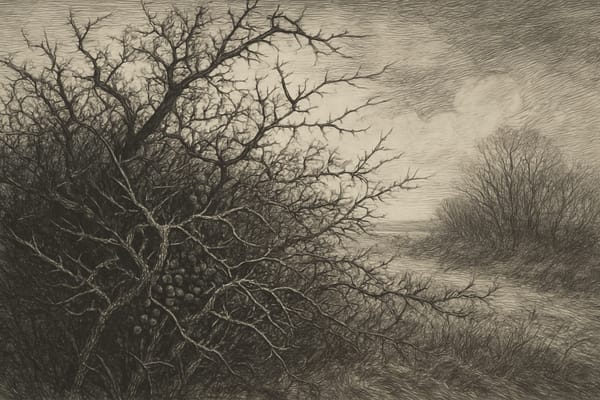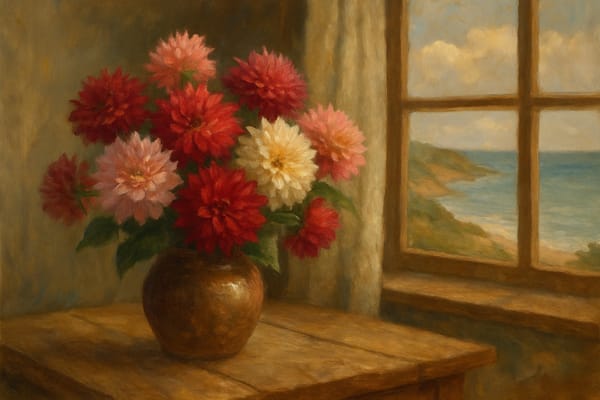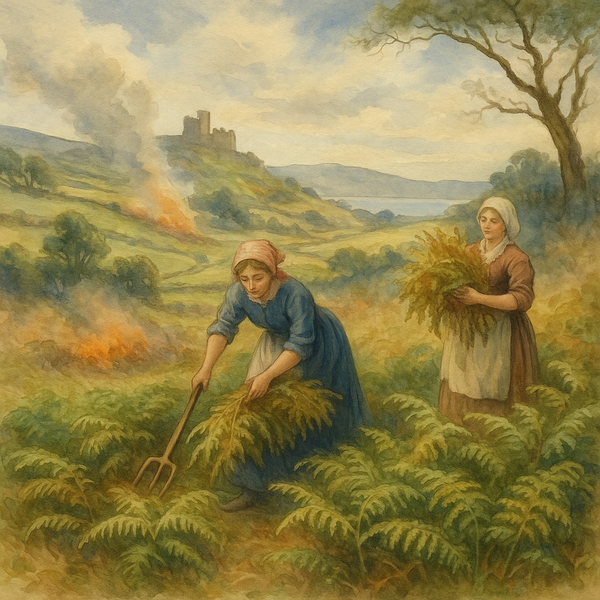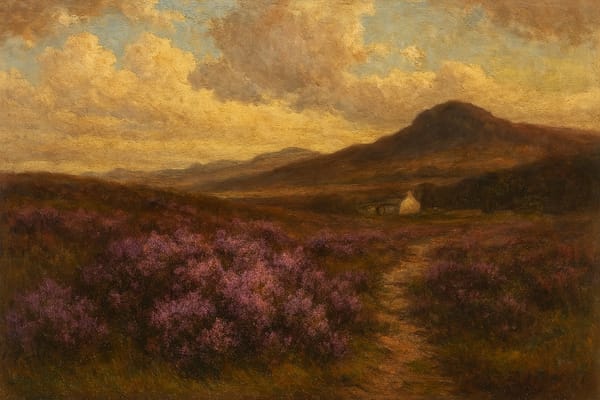Across Cornwall’s field edges and windswept hedgerows, the blackthorn (Prunus spinosa) stands as both a guardian and a warning—its twisted limbs and fearsome thorns steeped in tales of magic, mischief, and liminal thresholds. More than a hedgerow plant, blackthorn weaves through Cornish folklore as a symbol of protection, dark enchantment, and the shifting seasons.
The Boundary-Maker of Land and Spirit
Blackthorn’s dense, spiny growth has long marked the edges of Cornwall’s farmlands, acting as a living fence against both physical intruders and unseen forces. In folklore, its tangled branches were said to hold back evil spirits, faerie folk, and bad luck, forming a potent barrier between the safety of the homestead and the wild unknown beyond.
Legends warned that crossing a blackthorn hedge at dusk—when the veil between worlds grows thin—could lead the unwary into the Otherworld. Blackthorn was seen not just as a boundary of fields, but of fate itself.
Dark Magic, Witchcraft, and the Wise Woman’s Staff
Blackthorn’s dual reputation in Cornish tradition bridges both protection and peril. Revered by wise women and feared as a witch’s ally, blackthorn wood was crafted into staves and “witch’s rods” —tools believed to carry potent power for both cursing and breaking enchantments.
Some tales speak of blackthorn staves used in weather magic—summoning storms or shielding homes—and others of their place in blessing rites or darker spells. The plant’s thorns and dense growth mirrored its magical duality: both a shield and a source of unpredictable power.
A Tree of Thresholds and the Turning Year
Blooming stark white against leafless branches in the chill of late winter, blackthorn heralds the dark season’s lingering grip and the cusp of renewal. In Cornish and Celtic lore, this bloom is linked to the Cailleach—the ancient goddess of winter—signifying transition, liminality, and the quiet force of nature’s cycles.
As autumn deepens, blackthorn yields its bitter sloes. These fruits, gathered after the first frost, carry their own folklore: symbols of patience, endurance, and the rituals of Samhain. Sloe harvests marked the descent into the dark half of the year, when the boundaries between worlds felt most alive.
Taboos, Caution, and Respect
In the old stories, blackthorn was never handled lightly. Cutting its wood without care—or sleeping beneath its branches—risked misfortune, bad dreams, or worse. Its reputation demanded caution, and every hedge carried a silent reminder of the respect owed to the unseen forces woven through Cornwall’s land.
These taboos shaped both superstition and practical life: cutting was done with purpose, and gatherings near blackthorn at dusk were avoided, leaving the plant as an enduring symbol of respect for nature’s hidden powers.
Blackthorn in the Landscape: A Living Legacy
Blackthorn remains a defining feature of Cornwall’s hedgerows and wild spaces—a living link between the cultural memory of folklore and the ecological health of the land. Its tangled growth supports wildlife, marks ancient boundaries, and stands resilient against wind and weather, embodying Cornwall’s fierce spirit of endurance.
Today, conservation efforts often echo these age-old beliefs, blending ecological care with the stories that have long given blackthorn its power in both hedge and heart.











